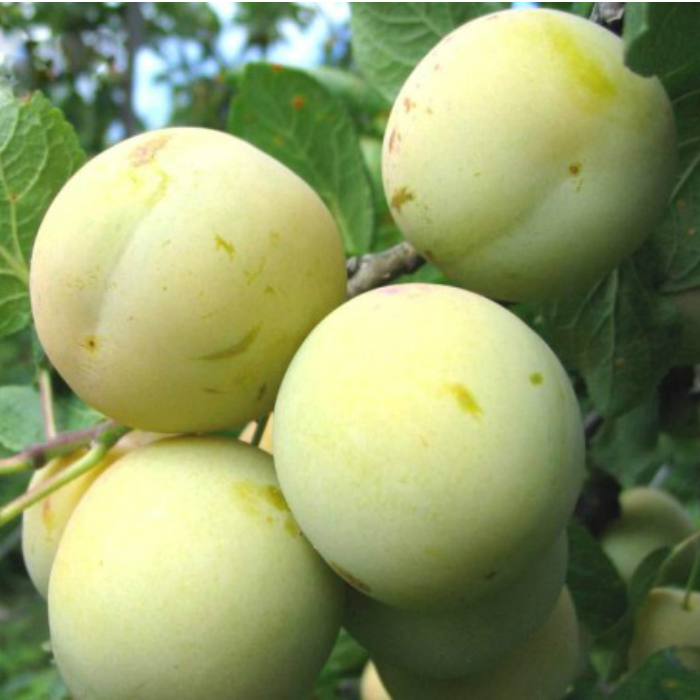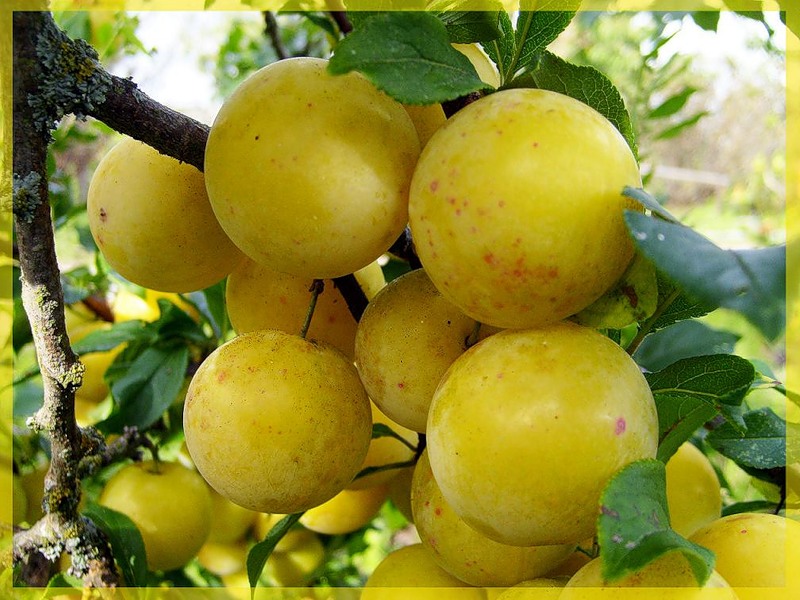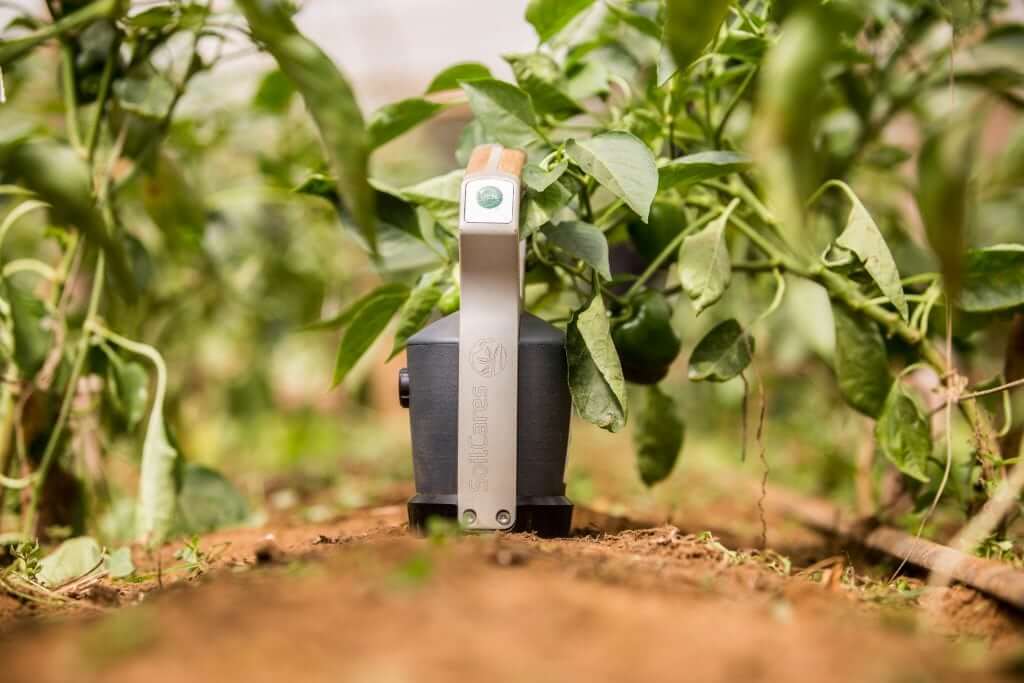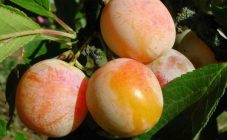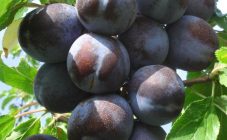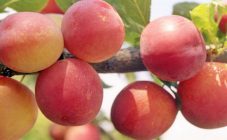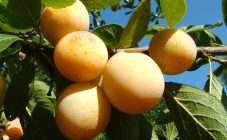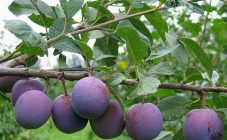Content:
A bit of history
The plum variety Renclode belongs to a very old and well-known medium-late ripening fruit crop. It was obtained at the All-Russian Institute of Breeding and Genetics back in 1889, specialists managed to cross two widespread species such as the thorny plum and the green Renclode. Its author is the famous Soviet scientist I.V. Michurin, under whose leadership test landings took place.
The first fruiting of this hybrid was recorded in 1899, that is, ten years after the start of the trial. It turned out that the obtained variety Green Plum, or Blue (other names of the species), is quite frost-resistant, as evidenced by the severe winters of 1939 and 1940. Despite the fact that the wood and bark of the Renklode trees were partially frozen, they almost completely recovered within several years. Subsequently (by 1944) a good plum crop was harvested from these plantings.
A couple of years after the war (in 1947), the hybrid plant passed full-fledged state tests. From about the same time, its test landings were carried out in all regions of the European part of the USSR. The trees of this species (one of its varieties - the Tambov collective farm) turned out to be not very large (up to 2.5-3 meters in height), and the strength of their growth was assessed as average.
In general, the plum hybrid called Renklode kolkhoz proved to be fairly resistant to most garden diseases, with the exception of susceptibility to the spread of fungal infections. In addition, this plant differs from many other crops in that it has the ability to pollinate on its own (in other words, this variety is self-fertile).
The first full harvest of this type of plum can be harvested in 3-4 years. According to the general classification of fruit crops, according to this indicator, it can be positioned as early.
Characteristics and description
Tree and trunk
When considering the main characteristics of this variety, the following should be noted:
- The beauty-crown at the Renclode plum is very spreading, with a slight roundness, and the number and density of foliage on it are estimated by average indicators.
- The bark of this stem is quite smooth with a light gray tint.
- The shoots of the plum tree are almost straight, have a short length and thickness. Their color is reddish brown.
- The leaves of this plant are small in size, and in shape they are oblong-oval and flat. Their color is light green, there is a small serration at the edges.
- The petioles used for breeding are of the same average size and have a pronounced pigmentation.
As for the flowering of the variety Renklod kolkhoz plum, which is described in this section, its inflorescences, white in color, do not differ in large sizes (according to this parameter, they are rather average).
Fruit
The main fruiting of this species is concentrated on the bouquet part of the branches, but sometimes it is observed on the one-year growth. In order to describe the fruits of the Renklode collective farm culture, the following parameters should be noted:
- The plums themselves in this variety are quite small (in terms of their mass, they rarely exceed the maximum figure of 25 grams).
- Their shape is round, with an oval top.
- From the side of the stalk, the yellow-greenish plum fruit is strongly flattened.
One of the sides of the fruit is slightly more developed and has a notch at the location of the longitudinal seam. The color of the plums themselves is greenish-yellow, but some of them have a brownish blush from the side of the sun's rays. The skin is very thin, with a dull shade and gray subcutaneous dots (it is easily separated from the pulp).
The stalks of plum branches are light green in color and with a length of 2 cm have an average thickness. The seeds of the plum itself are small (their mass is 6.5% of the total weight of the fruit), and the pulp is slightly green with a tinge of yellow.
Agrotechnics
Disembarkation
The planting time of the collective farm Renklod plum (one of its varieties is the Kuibyshevsky variety) in most regions of Russia is tied to the beginning of spring.
When choosing a suitable site, proceed from the following considerations:
- It should be well lit in sunny weather.
- It is preferable to choose the area of the garden where access is limited to strong winds.
- At the same time, they try to make sure that the plum seedling is surrounded by large trees that reliably protect it from drafts.
- It is desirable that at least one of these plants can be used as an additional pollinator for the plum.
Immediately before planting the finished seedling, you should check the soil for acidity, and then thoroughly prepare the planting hole. When assessing the quality of the soil, one must proceed from the fact that loam with an acidity of the order of 6.5-7.0 pH is optimal for the Renklod variety.
You should start arranging a pit for a seedling about 12-14 days before the start of planting work (experts advise to do this in the fall). When preparing it, the following dimensions must be observed:
- Its diameter should be approximately 70-80 cm.
- The depth of a standard fossa usually does not exceed half a meter.
- When planting several seedlings together, the distance between them is maintained within 3 meters.
When preparing the soil at the landing site, its composition is taken into account, and, if necessary, up to 8 kg of compost mixed with humus is additionally introduced into the pit, where then about 100 grams of ash is added. Sometimes organic matter is replaced by mineral additives consisting of 200 grams of superphosphate plus 80 grams of potassium sulfate.
The resulting mixture (together with the previously discarded soil) is thoroughly mixed and poured directly into the hole, in the center of which a small hill is formed. After that, a young tree is placed in it, carefully straightening the roots, and then covered with the remains of the fertilized mixture.
From the south, a support peg is stuck into the pit, to which the trunk of a young tree is subsequently tied. At the end of planting, water the plant abundantly, spending about 2-3 buckets of water on it.
Care
Regular care of growing seedlings is traditionally reduced to their watering, hilling, pruning and fertilizing the soil in the planting area.
Watering is organized according to the principle of necessary sufficiency (that is, only when the soil is severely dry). The most important thing for a plum is not to overdo it with the amount of moisture poured under a young tree, an excess of which leads to fungal diseases.
It is allowed to start feeding a growing seedling only a year after planting. It is organized according to the following scheme:
- Once every 3 years, organic matter (ten-liter bucket of compost or humus) with a small addition of superphosphate is introduced under the root of a young plum.
- In March-April (before flowering), up to 20 grams of ammonium nitrate or urea replacing it is also introduced there.
- After the fruits begin to ripen, the soil under the plant is fertilized with small portions of urea and nitrophoska (about 30 grams each).
- Finally, after harvest, they are fed again with minerals (no nitrogen).
Correct pruning of a young seedling implies timely shortening of the branches by a third, which will subsequently allow the formation of a lush crown. Once every 3 years, the growing main shoots are cut to a third of their length; at the same time, weak branches are completely removed.
Advantages and disadvantages
The advantages of the Renklod kolkhoz plum variety include:
- Quite a high yield.
- Excellent winter hardiness.
- The possibility of using the seeds of this variety as a stock material.
- Good germination.
The relative disadvantages of this variety include the formation of abundant growth.
In conclusion, we note that the domestic type of Renclode plum is widespread in most regions of Russia, amateur gardeners prefer it to all other varieties. It attracts the attention of connoisseurs of fruit sweets not only for its taste, but also for the ease of caring for the plant.
